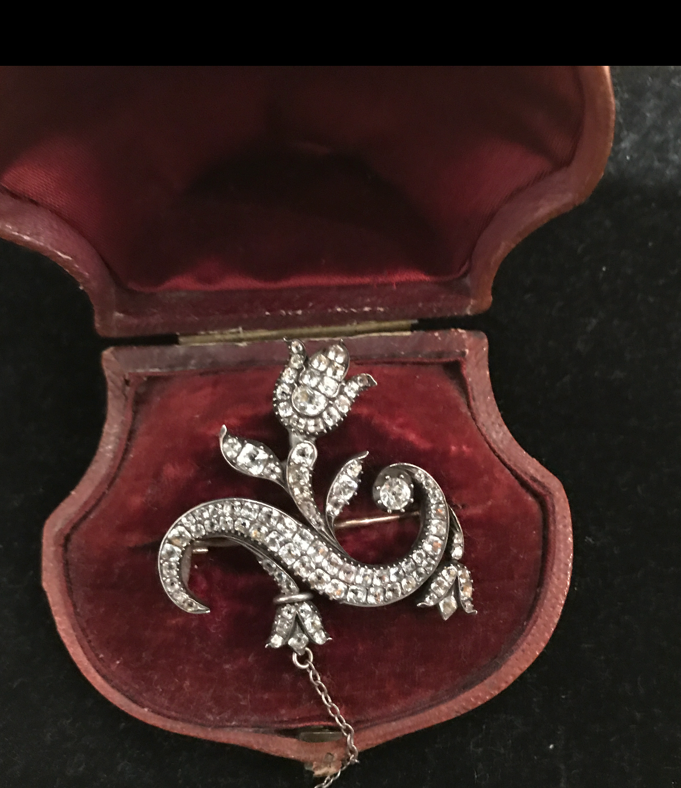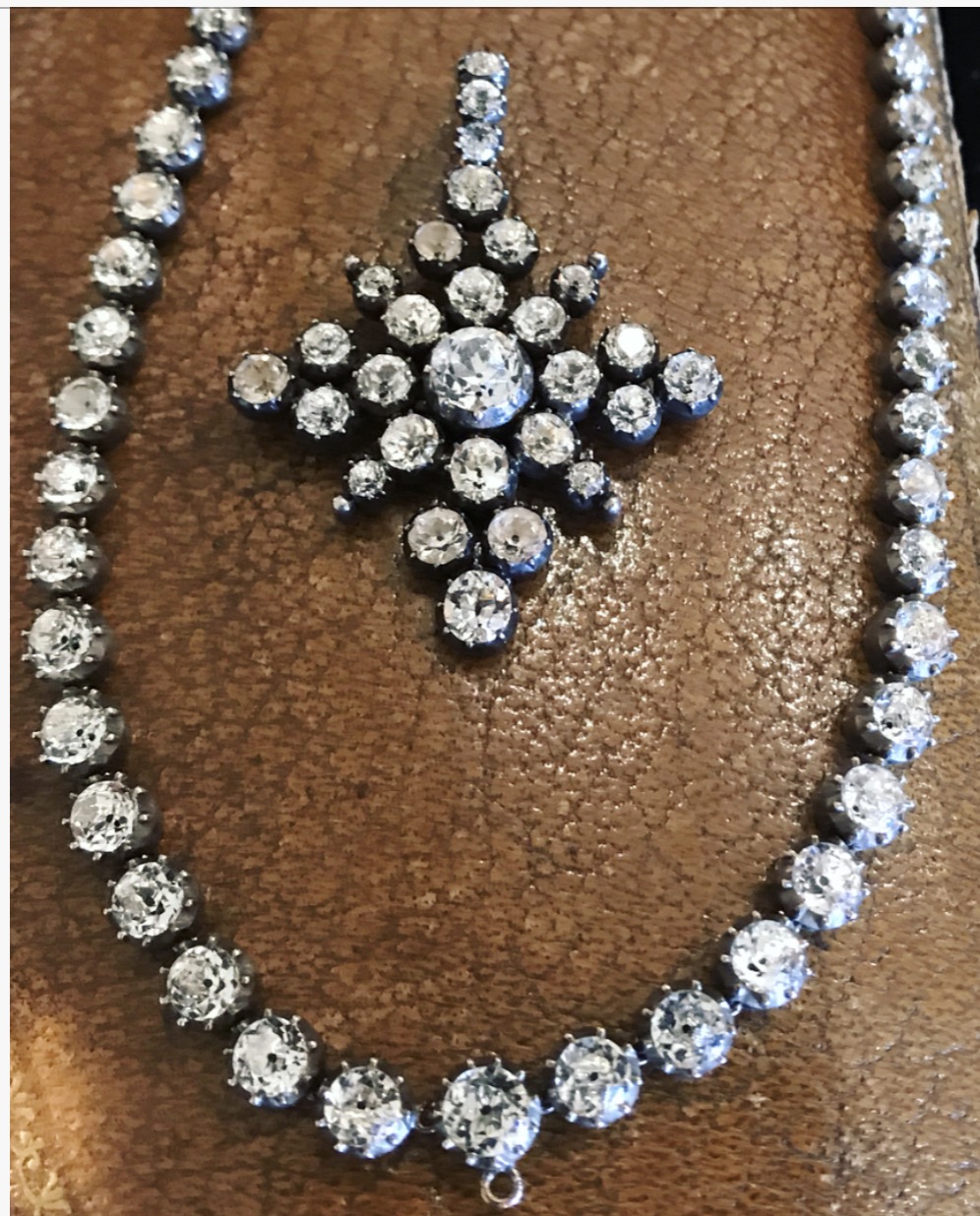A Desirable Category of Georgian Jewelry
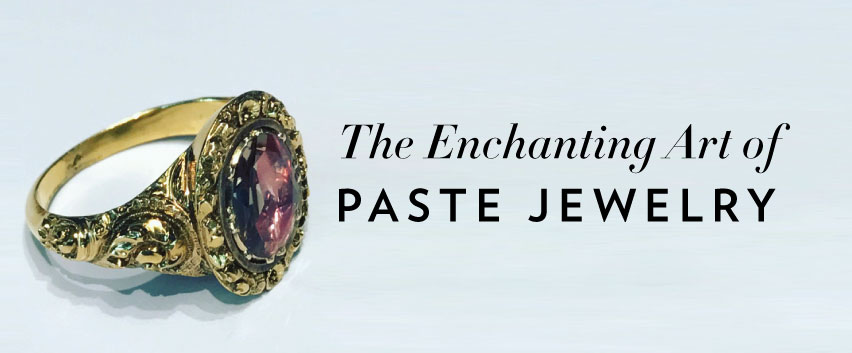
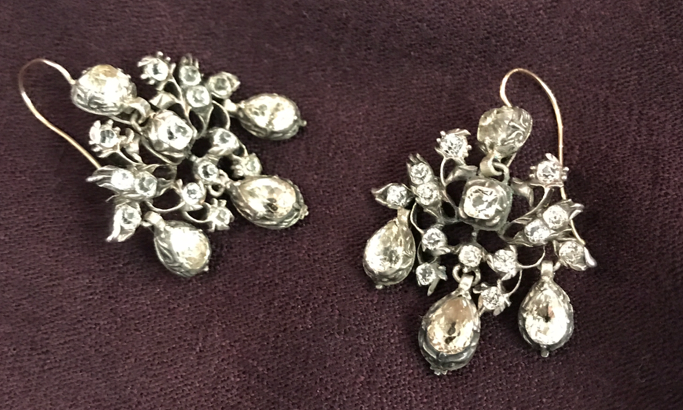
A stunning example of Georgian paste earrings at The Spare Room Antiques
It’s fall antique week in New York City with three shows featuring rare and authentic jewelry that range from medieval times through the vintage ‘70s. We launch our three-part series on the shows with one particular type of jewelry we spotted at different dealers at the New York City Jewelry and Watch Show, Metropolitan Pavilion, which ran from Friday, October 27 through Monday, October 30, 2017
Antique paste, has become as collectible as other rare pieces of 18th and early 19th-century jewelry, is recognized as an art form in its own right. It was originally created to replicate diamond and gemstone jewelry but become an enchanting classification of jewelry that took Europe by storm.

Glorious Antique Jewelry’s regal Georgian Paste foil backed paste ring
First invented in France, high society and royalty, including the legendary Madame du Barry and Marie Antoinette, often wore necklaces, earrings and tiaras crafted from paste, prominently and on special occasions. Soon after it became popularized in France, this form of antique jewelry spread to England, Spain and Portugal, and attracted a widespread regal audience throughout.
- Lowther Antiques Georgian Paste Brooch
- Lowther Antiques Paste rivière and pendant which can be attached
During this time, diamonds and other precious stones had to be cut around the shapes in which the gems were found.
The paste process was ingeniously invented by jeweler Georges Frédéric Strass. He became famous in the early 1730s when he used a high lead content glass that could be hand-faceted, hand-cut and polished, and was extremely reflective. He was appointed Jeweller to the King of France in 1734 and paste also become known as “stras”.
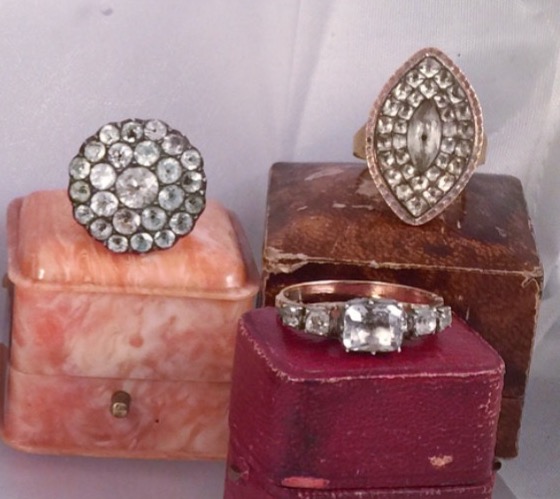
The Spare Room Antiques’s various style Georgian paste rings
Like the other gemstones of this time, antique paste was foil-backed and in closed settings, which enhanced the brilliance, color and depth of the stones. Most often the early paste was set into silver or silver-topped gold in cut-down or collet settings. It was also set into beautifully detailed and crafted earrings, brooches, necklaces and bracelets – sometimes in suites or parures – and men’s cufflinks and buttons, many of which were redesigned into rings and smaller drop earrings in the latter half of the century.
When we talk about paste jewelry, who can forget one of the most celebrated collectors of the 20th century, Elizabeth Taylor. She fell in love with a pair of Georgian paste earrings in a shop window in France in the 1950s and her husband at the time, Mike Todd purchased them for her. She wore them often and in publicity shots until Todd surprised her by replicating the style with diamonds. Taylor noticed something different about the jewels when putting them on but was thrilled with the surprise. Die-hard authentic antique jewelry fans still prefer the orginals she wore.
The most desirable designs among today’s antique jewelry collectors are the revières, the more elaborate earrings, the stomachers, all of which we saw at the New York Jewelry and Watch Show.
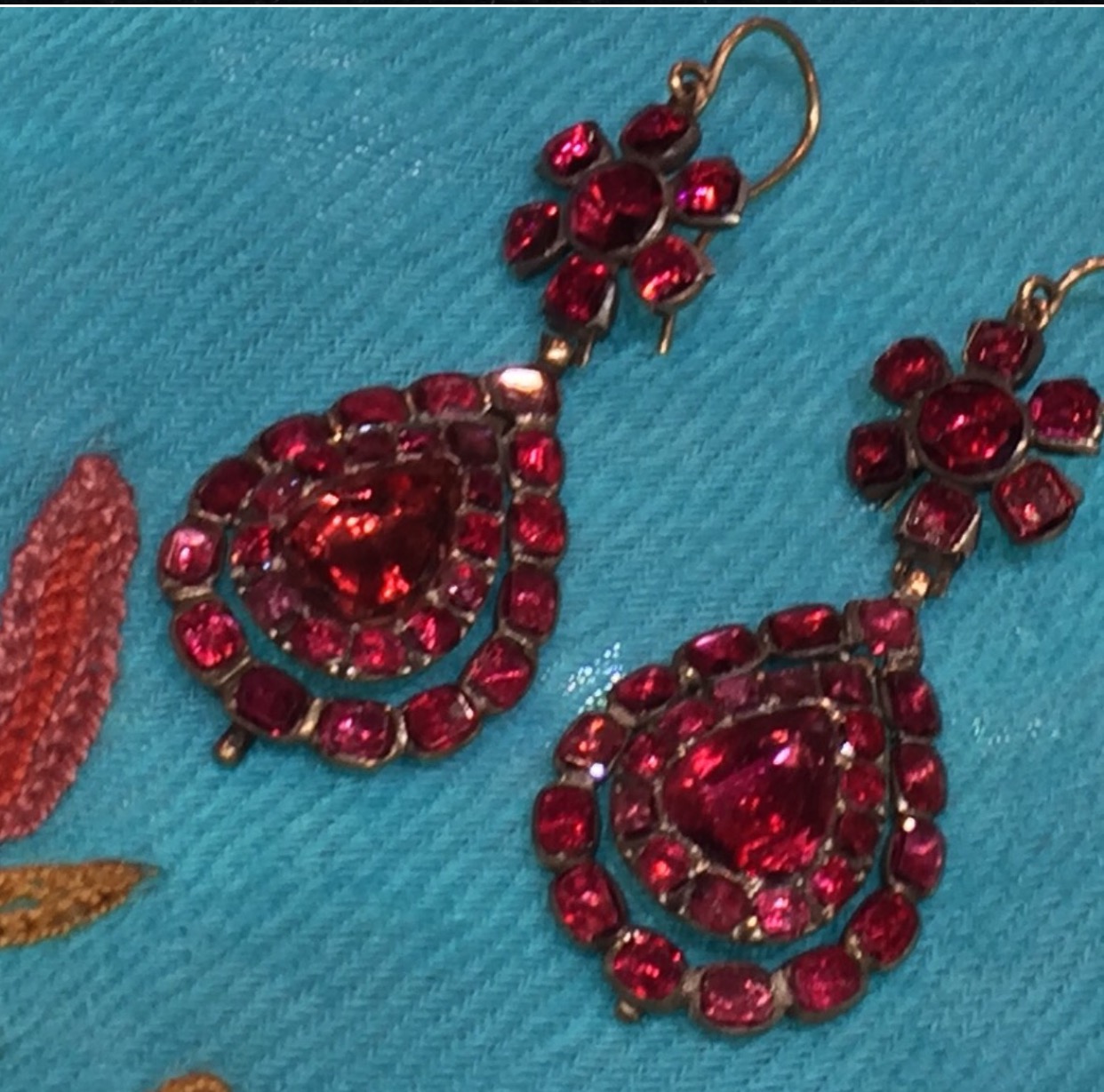
Simon Teakle’s vivid Georgian paste earrings in the Rococo style
Georgian paste often has a black dot painted on the culet – the tip at the bottom of the gem, which inspired the term “black dot paste”. This helped give the illusion of depth. The most authentic paste jewelry was designed up until approximately 1865, which accounted for some of the open-back paste during the Victorian period. These pieces were brilliant and colorless and were set in a variety of settings.
After this period, paste was still being used but it was also a time of innovation due to the industrial revolution, and patent-led glass cutters such as Daniel Swarovski turned glass into a different art form – albeit not with the same original elegance and aristocratic air of antique paste jewelry.
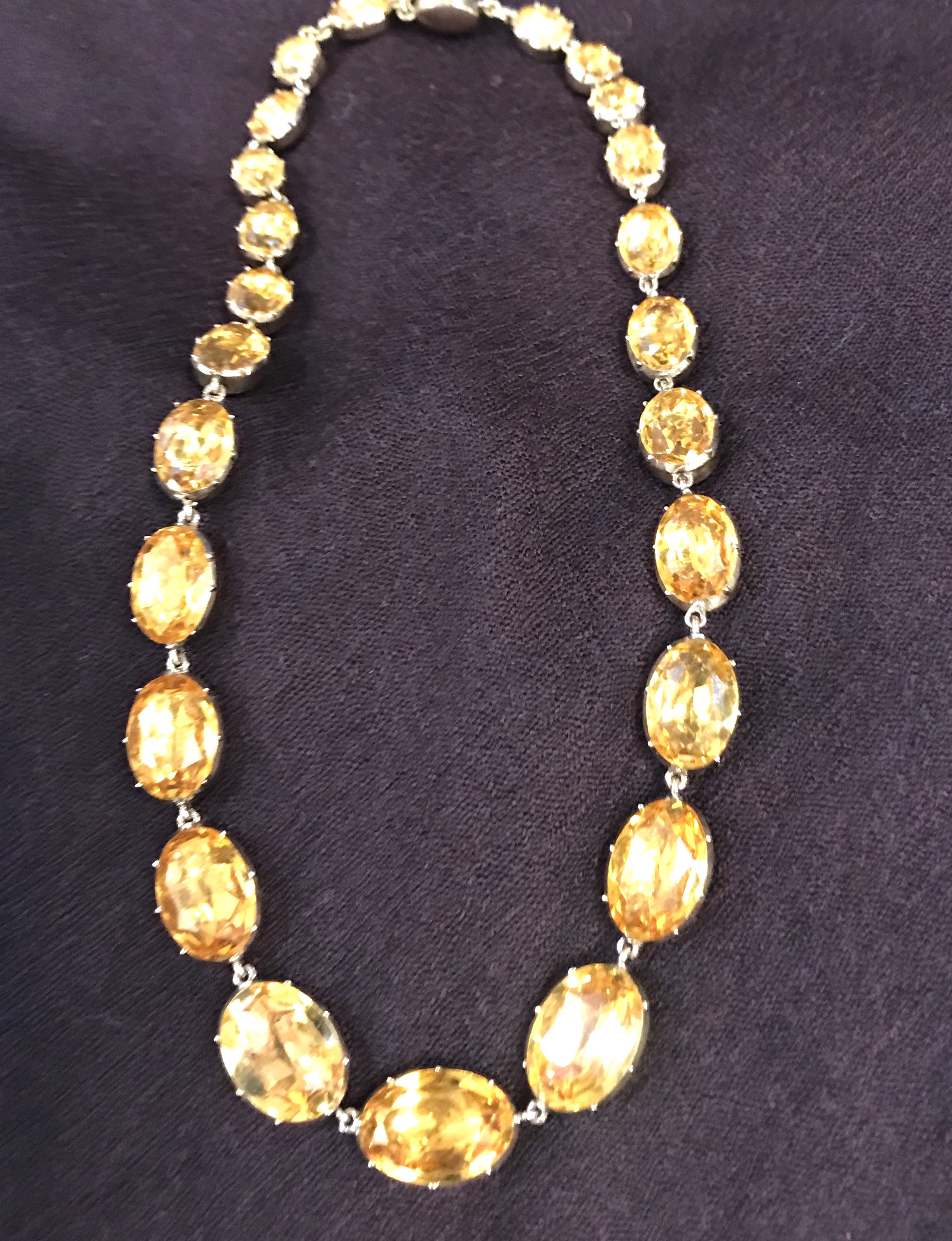
Simon Teakle’s paste “citrine’ Georgian rivière neckalce
Part of this article which describes the history of paste was included in a story I wrote in 2015 for Thejewelleryeditor.com.

